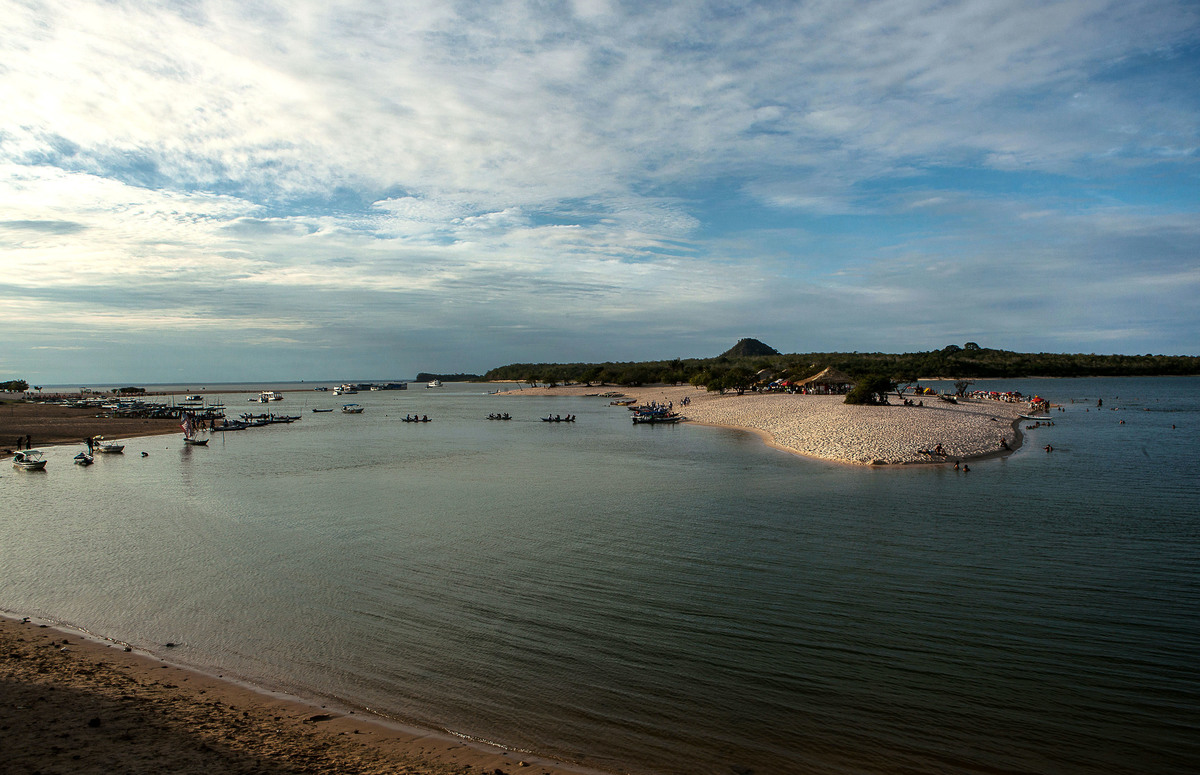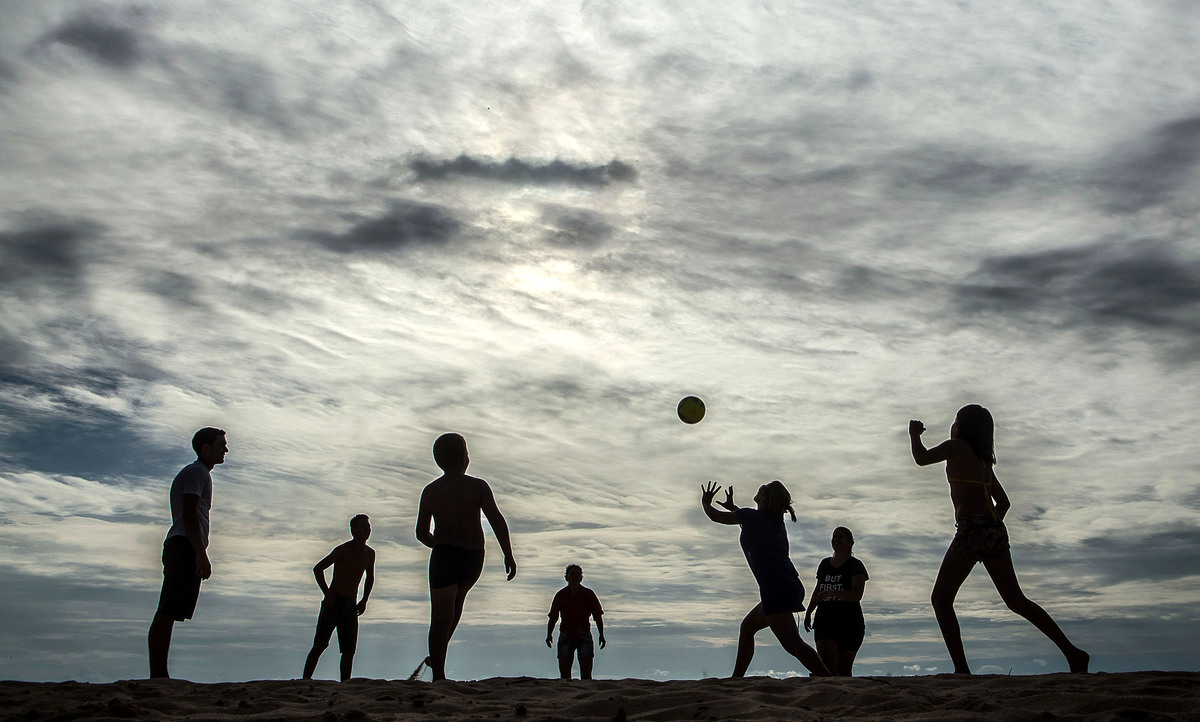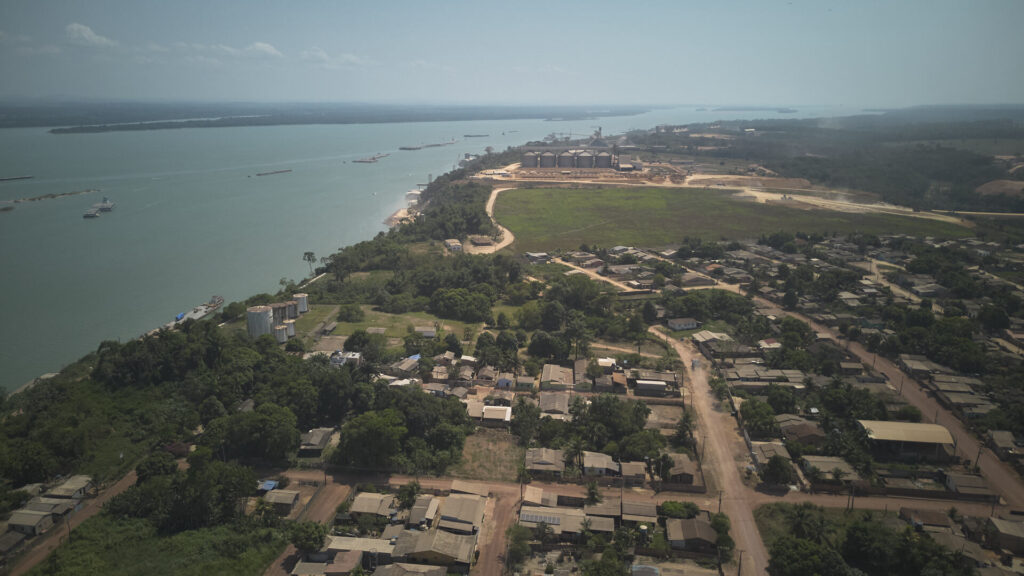
Fish kills, mercury contamination, the extinction of known aquatic species (along with others still not known to science), plus the physical and economic ruin of indigenous and traditional river communities. These are among the reasons not to build a series of hydropower plants in the Tapajós Basin at the heart of the Brazilian Amazon, say experts critical of the project.
Brazil hopes to build up to seven hydroelectric dams on the Tapajós River and its tributaries in a part of Pará state known for its exceptional aquatic and terrestrial biodiversity. The São Luiz do Tapajós hydropower plant — the largest and first proposed dam — will cost R$ 30 billion (US$ 8.3 billion), and uproot more than 2,500 people living in traditional and native villages along the river, while drastically altering the region’s environment and economy.
To learn more about the river and the people that live and work in the path of the proposed power plants, Mongabay commissioned a Repórter Brasil journalist and photographer to sail 280 kilometers (174 miles) down the Tapajós from Itaituba to Santarém over the course of ten days.
Down the river
We rode some of the way in an open boat strewn with fishing nets, sailing with Raimundo Nonato Firmino, a thin, wiry old man with deep wrinkles and scars who has weathered many years as a Tapajós fisherman.
Raimundo comes from the community of Barreiras, just downriver from the planned São Luiz do Tapajós dam. At 72, he has eight children and is awaiting a fourteenth grandchild. A fisherman almost all of his life, he tells us that making a living on the Tapajós isn’t always easy, nor is it always reliant on skill. Raimundo recounts a story of how he was once forced to ride out a wave of especially bad luck, going 84 days without catching a fish.

Capable of enduring such setbacks stoically, he looks fragile now, as he describes his fears over the likely impacts of the Tapajós dams. “I can’t explain how I feel. In my mind this shouldn’t be happening,” he says. “It is going to harm a lot of folk here because the river [levels are] going to go down. It will hurt the turtles, the fish spawning, which will diminish. God only knows if I will live to see it. But my children and grandchildren will, and I find it quite sad.”
The Tapajós is one of the longest rivers in Brazil, flowing for more than 800 kilometers (500 miles) from Mato Grosso state, winding sharply north but angling east, until it arrives at the city of Santarém, where it merges with the Amazon River.
The mood of the stream changes with the seasonal rhythms and the rains. It forms long white sand beaches, shoals and islands during dry times, when the Tapajós is fed all along its length by igarapés, tiny creeks isolated from each other for much of the year — little streams where unique and varied fish species thrive, and alligators hunt.

Then there are the wet times of the year when the igapós — large sections of low lying rainforest — fill up with water, creating vast lakes that make ideal nurseries for fish and for amphibians that lay their eggs among the submerged roots.
At such times, many of the normally isolated igarapés merge, bringing together creek species and subspecies normally cut off from one another. The result of these seasonal cycles is a vastly enriching aquatic dance, where isolation and connectivity alternate to yield tremendous genetic resilience and evolutionary diversity — a dance to which the Tapajós Basin’s unique aquatic species are ideally adapted.
Flawed Environmental Impact Study?
The new dams will likely bring that richness to an abrupt end, a conclusion reached in an Environmental Impact Study (EIS) commissioned by the federal energy agency Eletrobrás in conjunction with the “Tapajós Study Group” which includes companies hoping to build and profit from the hydroelectric projects.

The EIS describes the sudden impacts of the mega-project on the Amazon environment in this way: There will “be a quick disappearance [of habitats], with sudden consequences on the local fauna, which could cause the loss of animals and the reduction of their populations.”
Despite that damning statement, the EIS concludes that that there will be no significant environmental impact overall, and that the project should go forward.
That conclusion has come under heavy fire from conservationists, NGOs and scientists, who say the findings minimize and hide the true scope of the environmental catastrophe that would result from the Tapajós dams.
IBAMA (the Brazilian Institute for the Environment and Renewable Natural Resources), the federal environmental agency responsible for approving the environmental license for the hydroelectric projects, has yet to approve the official EIS carried out by the Tapajós Study Group. That group is led by Eletrobrás and made up of Brazilian companies Eletronorte, Copel, Endesa Brasil, Camargo Correa, Cemig and Neoenergia; and French companies EDF and GDF Suez. All these companies have a strong financial motive for seeing the project built.
In an independent analysis of the EIS commissioned by Greenpeace, scientific experts selected by the NGO criticized the methodology and results of the document.

While Eletrobras did not issue a comment on the Greenpeace report, it did gain a reaction from IBAMA. In March 2016, agency representatives met with four of the independent researchers responsible for the NGO report. The federal agency in turn used the Greenpeace findings as a means of challenging more than 100 findings in the EIS. The agency sent that list to Eletrobrás, but as of this writing the Tapajós Study Group has not formulated a response.
Aquatic species errors?
The EIS makes significant basic biological errors, according to the independent specialists. Species identifications, for example were often erroneous, with some Tapajós fish species doubly identified, while others were not mentioned at all. According to the experts, there were even errors and missing information concerning well-known Amazon fish, such as the curumatã (Prochilodus sp.), and the pirarucu (Arapaima sp.) — important commercial and subsistence fish for indigenous groups, traditional groups, and local cities and villages.
“These weaknesses raise doubts about the quality of the taxonomic [classification of species] and biologic information gathered, that may be based on mistaken identification and misidentification of species,” concludes the independent report.

According to researcher Jansen Zuanon, of the National Institute of Research on the Amazon (INPA), who was responsible for a critical analysis of the aquatic life portion of the EIS, little effort was made by EIS investigators to conduct manual collection of fish on the Tapajós, especially at the exact locations where the dam and power plant reservoir will be installed.
That particular location is ideal for generating electricity because it is a place where the river drops quickly, forming a rocky set of rapids inhabited by unique aquatic species which the diving sessions conducted by the Tapajós Group largely failed to note.
It is precisely these aquatic species that would be most severely impacted by the dam, which would transform those sections of river into vast stretches of still water. According to Zuanon, this serious lack of data alone compromises the validity of the EIS.
Geographer Rodrigo Herles, a technical assistant in IBAMA´s Licensing Office, reports that among the many issues addressed to the Tapajós Group was the lack of comprehensive research into the areas upstream and downstream of the reservoir, as well as a complete assessment of the social and economic impacts on ornamental fish (gathered by traditional fishermen to sell for aquarium use), and on subsistence fishing by traditional communities.

The greatest fear of fishermen In Barreiras is that the São Luiz do Tapajós dam will result in the loss of the piau (leporinus elongatus), one of the community’s iconic fish, and a valuable commercial species, says Edson Carlos Porto, who dropped out of school in fourth grade to help his dad on the family’s fishing boat
“The piau fish spawn in the islands of the igapó [swamp forests typical of the Amazon], which will no longer flood because of the barrier [created by the dam and reservoir],” he tells us. “The fishing season is from April to July, and in the first two months you can catch up to 15 kilos [33 pounds] per day of just it alone, which we sell for R$ 11 per kilo.”
“We also don’t know what will happen to the pirarucu, tambaqui, curimatã, pacu, mapará, and branquinho [other commercially important fish species], which are caught around here. I’ll probably end up having to leave,” says Edson.
What we don’t know…
The many questions asked by the various experts, raise yet another key unanswered question: just how much is unknown, and yet to be discovered, about the environmental impacts of the power plants, and especially the upstream and downstream habitats around those areas?

The Tapajós Basin is known as a cradle of biodiversity, with new species regularly being found across the region. Last November, a research expedition from the West Pará Federal University discovered many new species in the Açu igarapé, which is situated in the National Tapajós Forest, part of which the new reservoir would flood.
One new fish discovered is a type of “piaba”, similar to those found in other rivers around Brazil, but with different coloration, anatomy and size. The discovery was made by biologist Cárlison Silva de Oliveira, who found 117 fish species in 22 igarapés during his investigation.
Researchers say there is an urgent need for more studies before any construction begins. As evidence of that need, they point to basic disputes regarding the number of fish species known to the region. According to the Chico Mendes Biodiversity Conservation Institute (IcmBio), a federal environmental agency, the Tapajós Basin has over 494 fish species. But according to the EIS conducted by the Tapajós Group interested in building the dam, the region possesses only 352 fish species — a nearly 30 percent discrepancy and a difference of 142 species.
Still, no one denies that the dam will have a major impact on fish populations. Even the official EIS admits that barrier containment areas, locally called “ensecadeiras”, will change the course of large swaths of the river, causing fish kills. Reductions of the water table in the são luiz rocky region (a habitat in which diverse fish species now reproduce), and the creation of a large retaining wall, will create obstacles to animal movement. Those impediments could also jeopardize the survival of the pink river dolphin, giant otter, and black caiman. The EIS also reveals that there will be a loss of the vast linked lakes created during wet seasons, with serious implications for the fish mating and genetic mixing that happens during flood-times.
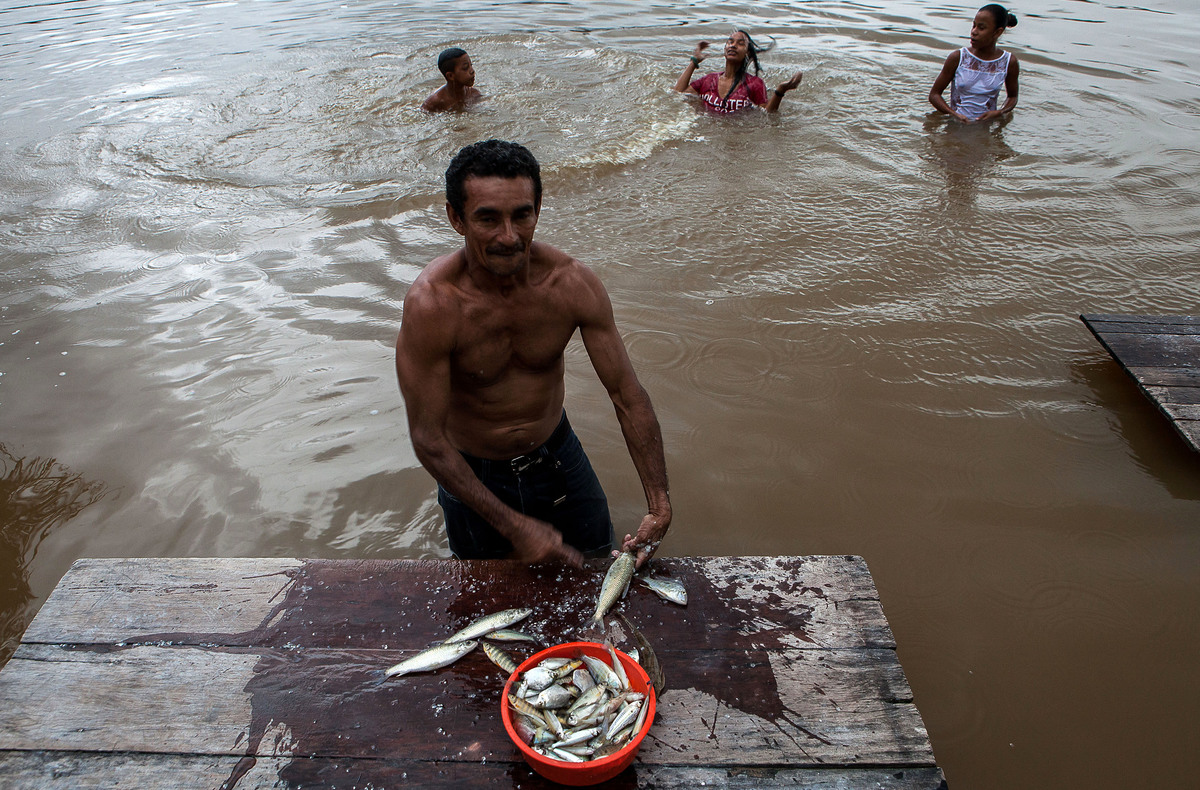
Meanwhile, the reservoir will flood unusual terrestrial habitats where unique species dwell, including ravines, cliffs, beaches and river islands. The São Luiz do Tapajós dam and reservoir will impact over 38,000 hectares (146.7 square miles). Of this total, half will need to be deforested, with a loss of native forests and small streams highly-specific to the region, threatening survival of the endemic species that only exist there — some possibly yet unknown to science.
Local people and local knowledge ignored
The main focus of the official EIS concerning social and economic impacts was on the immediate areas to be flooded — now occupied by the traditional villages of Pimental and Montanha Mangabal, along with indigenous villages inhabited by the Munduruku people.
The areas upstream and downstream of the dam, however, were not given sufficient EIS study, say critics, a major omission noted by many local traditional communities, by leaders in the municipalities of Santarém and Itaituba, by NGOs, and the Federal Attorney General of Pará.
These dissenting voices assert that many of the problems with the EIS could have been avoided or lessened had the investigation process included local fishermen and other river community residents — the richest knowledgebase concerning local species and the river’s dynamics.
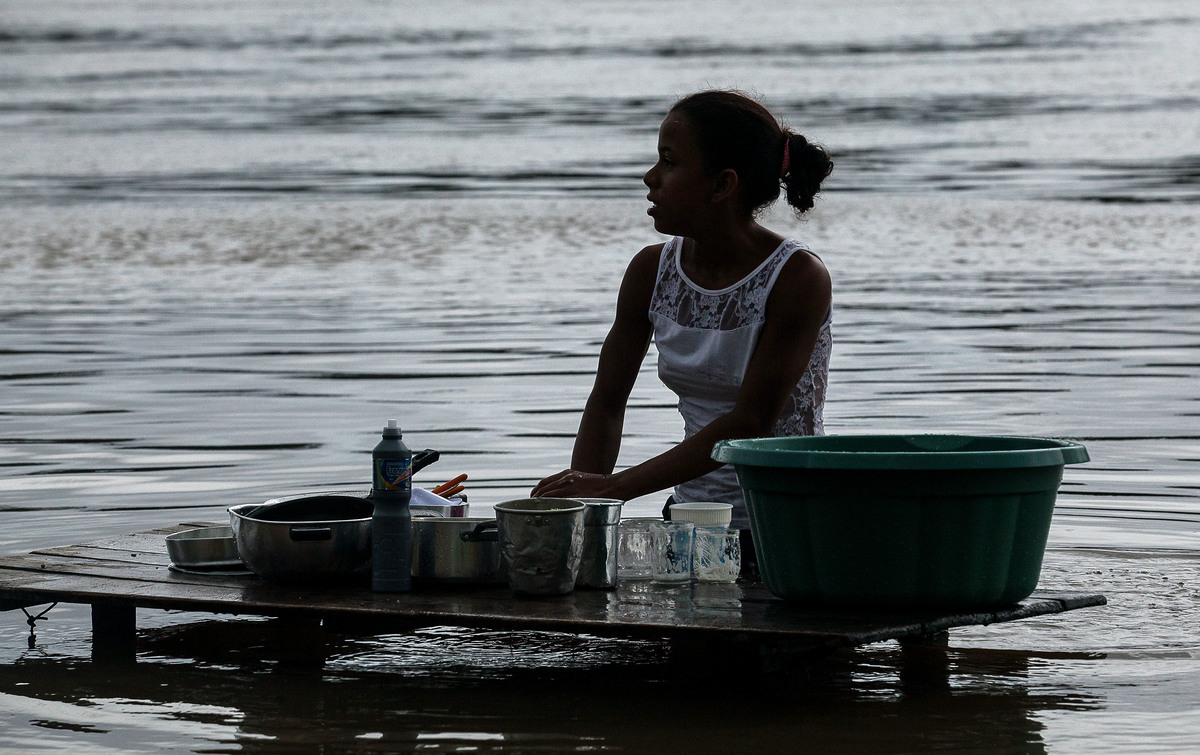
This failure to hold consultations with the traditional communities was the subject of a lawsuit brought by the Federal Attorney General of Santarém. The suit asserts that the companies engaged in the project are required to hear out the communities, in accordance with Convention 169 of the International Labor Organization, to which Brazil is a signatory. The convention states that potentially impacted indigenous peoples and traditional communities have the right to be consulted prior to dam licensing.
As we boated down the Tapajós River, going from Itaituba to Santarém, we stopped at fishing villages, where we could see the worry in the faces of people we talked to. Take Pimental, for example, a village that will be completely flooded. The near 700 inhabitants do not know where they will go once removed from their homes, nor how they will be compensated for the loss of their villages and livelihoods.
Risonildo Lobo dos Santos, known as Mr. Miga, makes a partial living by catching and selling ornamental fish, such as the “borboleta” and the “acaras”. He works daily by sailing along the river’s banks and up smaller creeks, searching out schools of fish with a fine nylon net. He scoops up his catch, and carefully removes them from the net by hand so as not to harm them.
Mr. Miga is one of the most respected people in his community, one of many ornamental fishermen, and a well known member of the Association of Pimental Residents and Fishers.
Most fishing along the river is done for larger, commercial food fish, he tells us, most of which are sold early in the morning, and transported in a hurry by motorcycles to markets in neighboring cities. Such sales must be made quickly because the local communities are modest, lacking refrigeration and professional distribution systems.
Contaminated Fish?
One environmental impact rejected by the EIS, but of major concern to locals and some experts, is the potential for a rise in mercury contamination in the Tapajós River.
The São Luis do Tapajós hydropower project will increase dangerous mercury concentrations, asserts former regional health superintendent and neurosurgeon Erik Jennings. Armed with research studies and international documents, he recently denounced the proposed dam as a public health hazard at a public hearing held by the Attorney General of Pará.

The inhabitants of Barreiras (downstream from the proposed dam), and São Luis do Tapajós (three kilometers upstream), have been tested for mercury contamination regularly since the 1990s by concerned scientists and public health authorities. Those specialists have found that mercury has been on the increase in Tapajós Basin waters and fish, likely the result of upriver gold mining operations that use the waterways to separate precious gold from ore.
For that reason, medical authorities have recommended a decrease in fish consumption by locals, explains nursing technician Vaneide Amorim dos Santos, who works at the medical station in São Luiz, where signs are posted asking fishermen to eat less fish. Too much mercury can result in nervous system harm and fetal damage.
Vaneide admits, however, that it is an uphill battle trying to get locals to alter their fish-heavy diets. A kilo of beef or other meat can cost between R$ 15-20. Fish go for much less. This reporter managed to buy a kilo of mapará for a mere R$ 3. And for a fisherman, mapará can be caught in minutes, for free, almost at the doorstep.
“The Center for Tropical Medicine studies the level of mercury in hair samples from the people of Barreiras and São Luiz, and there is a group [of scientists] that studies the neurological impacts,” explains Jennings. While residents of both communities have shown high levels of methylmercury in their hair samples, they haven’t yet manifested serious symptoms.
However, clear clinical signs often don’t manifest for many years. In a Japanese case of severe methylmercury poisoning, says Jennings, significant harm was only recognized after 24 years of exposure. Some Tapajós locals have already shown a loss of tactile and labial sensitivity, according to Jennings.

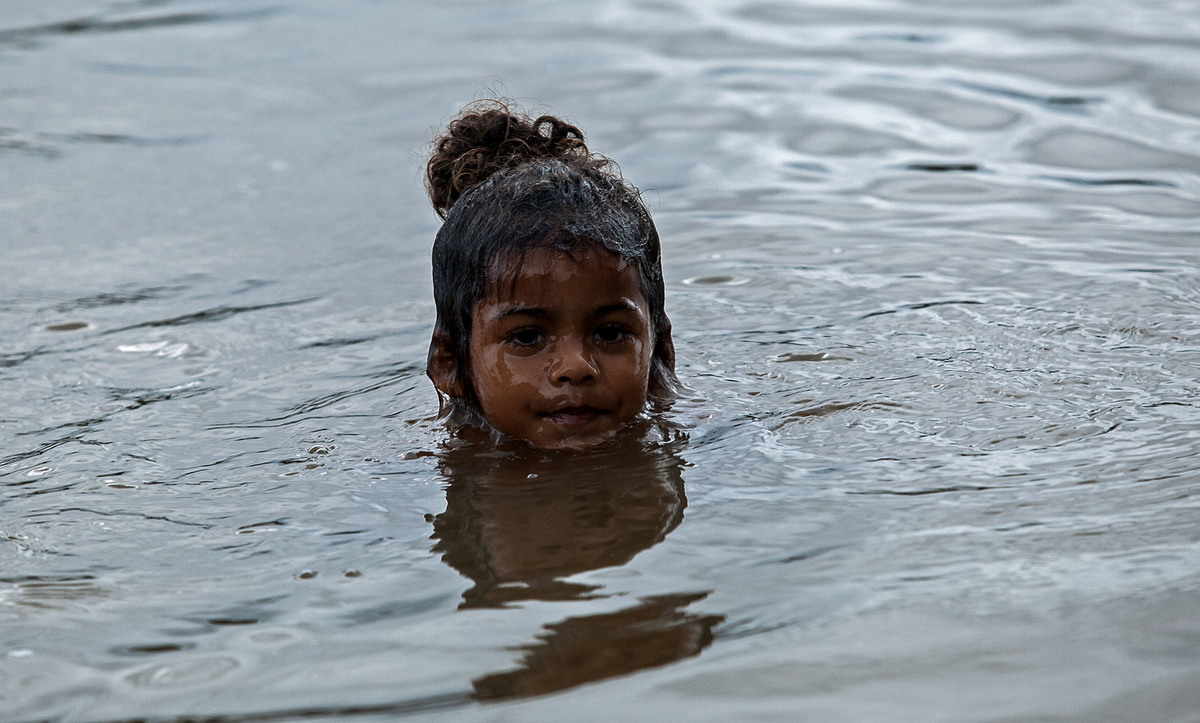
Those symptoms will, he says, become more acute if the power plant is built. Jennings explains that mercury not only comes from gold mining. It is naturally present in a harmless inorganic form in many soils, including those in the Amazon. Anaerobic bacteria feeding on the decomposing organic matter under a new reservoir, however, can transform that inorganic mercury into methylmercury, a serious central nervous system toxin. Methylmercury in the reservoir can then be absorbed by algae and passed up the aquatic food chain from small fish to bigger fish that eat them, with the toxin becoming more concentrated and dangerous at every step, a process known as bioaccumulation.
Then, of course, fishermen and consumers eat the big fish.
Jennings fears that the reservoir will serve as a perfect vessel for the transformation of inorganic mercury into toxic methylmercury. The hydroelectric turbines could then distribute it, dumping the contaminated water out of the reservoir and sending it downstream. At the Tucuruí dam on the Tocantins River in Pará state, the doctor notes, “the downstream mercury level is greater than at the reservoir.”
Jennings says past studies failed to find any risk of mercury poisoning of Tapajós fishermen and other locals because it used a Swiss study as a comparison. That European study found that a weekly intake of 400 grams of contaminated fish showed no ill effects. But indigenous and traditional people along the Tapajós consume far more fish, often eating it for breakfast, lunch and dinner, nearly every day of the week, increasing their exposure to mercury poisoning.
The debate concerning the environmental, social and economic impacts of the Tapajós Basin dams is far from over, and the future of the São Luiz do Tapajós dam is far from certain. IBAMA has put a hold on the dam’s licensing process for now, a step taken shortly before President Rousseff stepped down to face impeachment hearings last spring. The administration of Interim President Michel Temer has yet to put forward its position on the hydroelectric project. Until that decision is made, the lives of people and wildlife living in the Tapajós Basin hang in the balance.
